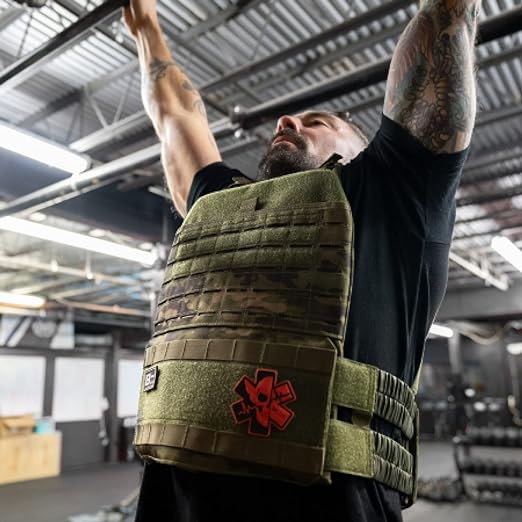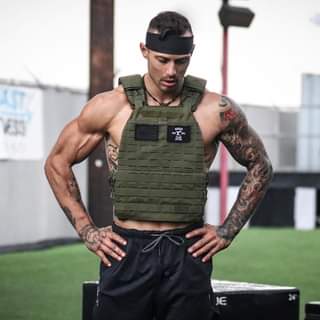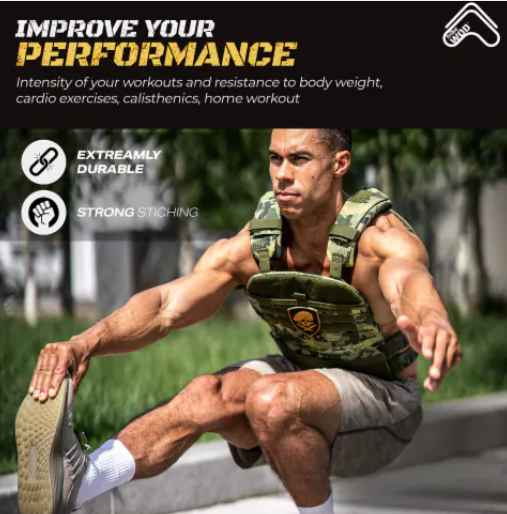In the realm of CrossFit, where functional fitness reigns supreme, athletes constantly seek innovative ways to challenge themselves and enhance their performance. Weighted vests have emerged as a popular tool for adding resistance to bodyweight movements, offering a dynamic way to intensify workouts and elevate strength, endurance, and overall fitness. Understanding the role of weighted vests in CrossFit requires exploring their effectiveness, optimal usage, and real-world applications.
Understanding Weighted Vests in CrossFit Workouts
Expanding on the discussion of weighted vests in CrossFit workouts, it's essential to delve into the variability of weights available and how athletes can optimize their usage. Weighted vests come in various weights, ranging from as light as 5 pounds to as heavy as 100 pounds or more. The selection of the appropriate weight depends on multiple factors, including an athlete's current fitness level, training goals, and the specific movements being performed.
For beginners or those new to weighted vest training, starting with a lighter weight is advisable. This allows athletes to acclimate to the added resistance gradually and focus on mastering proper form and technique. As athletes progress and become more accustomed to the added challenge, they can gradually increase the weight of the vest to continue challenging their muscles and promoting strength gains.
One of the critical considerations when selecting the weight of a weighted vest for CrossFit is the balance between intensity and safety. While it's essential to challenge oneself and push the limits, it's equally important to avoid overloading the body and risking injury. Athletes should listen to their bodies and adjust the weight of the vest accordingly, ensuring that they can maintain proper form and technique throughout their workouts.
Exploring Optimal Weights for CrossFit Weighted Vests
The selection of the appropriate weight for a weighted vest in CrossFit is crucial and depends on several factors. Athletes must consider their current fitness level, training goals, and the specific movements they aim to enhance. Starting with a lighter weight is advisable for beginners, allowing for gradual adaptation and mastery of proper form and technique. As athletes progress, they can incrementally increase the weight of the vest to continue challenging their muscles and fostering strength gains.
The optimal weight of a weighted vest for CrossFit varies depending on factors such as an athlete's fitness level, workout goals, and the specific exercises being performed. While some athletes may benefit from lighter vests for high-repetition workouts or endurance-focused sessions, others may prefer heavier vests for strength-building exercises or more intense training sessions. It's essential to choose a weight that challenges the athlete without compromising form or technique, allowing for safe and effective training.
According to a study published in the Journal of Strength and Conditioning Research, researchers found that the use of weighted vests significantly increased the metabolic demand and muscle activation during bodyweight exercises compared to bodyweight-only exercises (Smith et al., 2015). This suggests that weighted vests can enhance the effectiveness of CrossFit workouts by increasing the intensity and workload on muscles, leading to greater strength and fitness gains.
Considerations and Practical Applications
-
Safety Precautions and Form Emphasis
-
Variety in Workouts
-
Progressive Overload Strategies
-
Integration with CrossFit Programming
-
Benefits Beyond Strength and Endurance
-
Nutritional Considerations
-
Incorporating Feedback and Tracking Progress
Perspectives from Elite CrossFit Athletes
To gain insights into the practical applications of weighted vests in CrossFit, it's valuable to consider the experiences of elite athletes. Multiple-time CrossFit Games champions and Olympic weightlifters have embraced weighted vest training as a means to push their limits and elevate their performance. Athletes like Tia-Clair Toomey have integrated weighted vests into their workouts, citing their ability to provide unique challenges and drive improvements in strength, endurance, and overall fitness.
Athlete Testimonial
Tia-Clair Toomey, known for her dominance in CrossFit and weightlifting, shares her insights into the benefits of weighted vest training. According to Tia-Clair, incorporating weighted vests into her workouts has been instrumental in pushing past her limits and achieving new heights in performance. Whether engaging in bodyweight exercises, running, or lifting weights, the added resistance of a weighted vest challenges her in ways that traditional training alone cannot.
To gain insights into the real-world applications of weighted vests in CrossFit, we reached out to several elite CrossFit Games athletes for their opinions and experiences. One athlete, Brooke Wells, a multiple-time CrossFit Games competitor known for her strength and athleticism, shared her thoughts on the use of weighted vests in her training regimen.
According to Brooke, "Incorporating weighted vests into my CrossFit workouts has been a game-changer for me. It allows me to push my limits and challenge myself in new ways, especially during bodyweight movements like pull-ups and push-ups. I've noticed significant improvements in my strength and endurance since incorporating weighted vest training into my routine."
Conclusion
In conclusion, the integration of weighted vests into CrossFit training represents a paradigm shift in the pursuit of peak performance and physical excellence. As athletes navigate the demanding landscape of functional fitness, weighted vests emerge as a versatile tool for amplifying the intensity of workouts, cultivating strength, endurance, and overall fitness. By meticulously selecting appropriate weights, prioritizing safety measures, and embracing progressive overload strategies, athletes can unleash the full potential of weighted vest training, transcending their limitations, and achieving unprecedented levels of athletic prowess. Furthermore, the multifaceted benefits of weighted vest training extend beyond mere physical gains, encompassing mental resilience, proprioceptive awareness, and skill refinement.
Through strategic integration into CrossFit programming, careful attention to nutritional support, and proactive feedback mechanisms, athletes can chart a course towards sustained progress, empowered by the transformative impact of weighted vests on their CrossFit journey.
With careful attention to technique, safety precautions, and progressive overload, athletes can harness the power of weighted vests to unlock their full potential and excel in the demanding realm of CrossFit.










